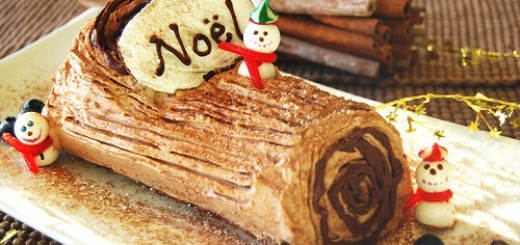A Primer On The Celebrations of “Christmas”
 Since the dawn of civilization the depths of winter have been cause for celebration – which is strange since it is so dark, cold, gloomy and interminable. So why celebration? Well, it has to do with the human spirit – the ability to find the good in the worst situation. And when the primitives realized that the day’s sunlight got longer after the solstice, well – Let’s Party. And that means gifts, feasting, libations (that’s drinking bad tasting alcohol for you under-18’s) and gathering around fires – because it was still cold. And we saw that different religions and cultures have developed different ways of celebrating these themes during their own dark days of winter.
Since the dawn of civilization the depths of winter have been cause for celebration – which is strange since it is so dark, cold, gloomy and interminable. So why celebration? Well, it has to do with the human spirit – the ability to find the good in the worst situation. And when the primitives realized that the day’s sunlight got longer after the solstice, well – Let’s Party. And that means gifts, feasting, libations (that’s drinking bad tasting alcohol for you under-18’s) and gathering around fires – because it was still cold. And we saw that different religions and cultures have developed different ways of celebrating these themes during their own dark days of winter.
Let’s start at the beginning – Solstice itself – December 21st, plus or minus. The primitive northern Europeans very early on celebrated the solstice – the “shortest day” of the year – which was great for the party because it was also the “longest night” of the year. Feasting, the Yule Log (and keeping its ashes), fires of various sorts, music (such as it was) and drinking weird liquids – all became part of the winter festival traditions.
Meanwhile in the East (where the Wise Men came from), starting about two centuries before Christ, the festival of Hanukkah was being celebrated by the early Jewish tribes. It took the form of a festival of lights, signifying a miracle of lamp oil not running out during a siege of the temple in Jerusalem – and of course, the retaking of that temple. In modern times it has become an eight-day holiday filled with rituals and celebrations that center on the home and family. The most common symbol of Hanukkah is the menorah with nine candles.
Christianity was the first religion to hitch its celebration to the local, ancient traditions. With the advent (that’s a pun – sorry) of the modern calendar, the birth of Christ and of the New Year became part of the solstice celebrations. The gift giving, the green tree, the light and fires, the feasting and of course the libations all were carried forward to the marking of Christmas by the Christian, western cultures. The notions of rebirth became notions of “the birth” and the festive nature of the season, although cold and dark, carried on more fully.
Kwanzaa is a celebration of African-American culture and unity and is a five-day event that was begun in the 1960’s. It has grown in scope and acceptance and is now characterized by seven founding principles such as unity, creativity and faith. It also is marked by the colors black, green and red and the symbols of a seven-candle “menorah” and a special cap worn during the celebrations. It is a festival based on family, creativity, freedom and unity of purpose – all of which extend beyond its African beginnings.
The most recent member of our “ Christmas” celebrations is the Hindu festival Pancha Ganapati. Originated in the 1980’s, it is a five-day celebration that focuses on Lord Ganasha, the patron of arts and culture. A shrine is built in the home and daily offerings are given each day denoted by different colors and themes. The holiday represents new beginnings and also the mending of past mistakes – a great idea don’t you think? Gifts are exchanged each day according to that day’s theme and color.
It should be said here that Christmas as a celebration has reached around the world as has western culture and civilization. I don’t want to compare its reach to Coca-cola and blue jeans, but it’s a close race. Celebrating Christmas has become part of many countries winter, in both religious and secular affairs. Even in Asia, without many Christians at all, there are Christmas features, often in government declared holidays, that keep those traditions alive.
So there you have it – a brief scan of how Christmas is celebrated by many non-Christians. I would attribute this to diversity (although I prefer the word ‘porosity’) and of course to the shrinking of the world and cyber communication of all sorts – but you knew that already. However, as you are paddling your way through the busy-ness of our Christmas, occasionally think back on the cold, fearful folks of the north wondering when the darkness would end and whether they would have enough food or heat to make it to spring. And realize that their hopes for renewal and rebirth are still celebrated by us today with great Comfort and Joy.
Happy Holidays!

